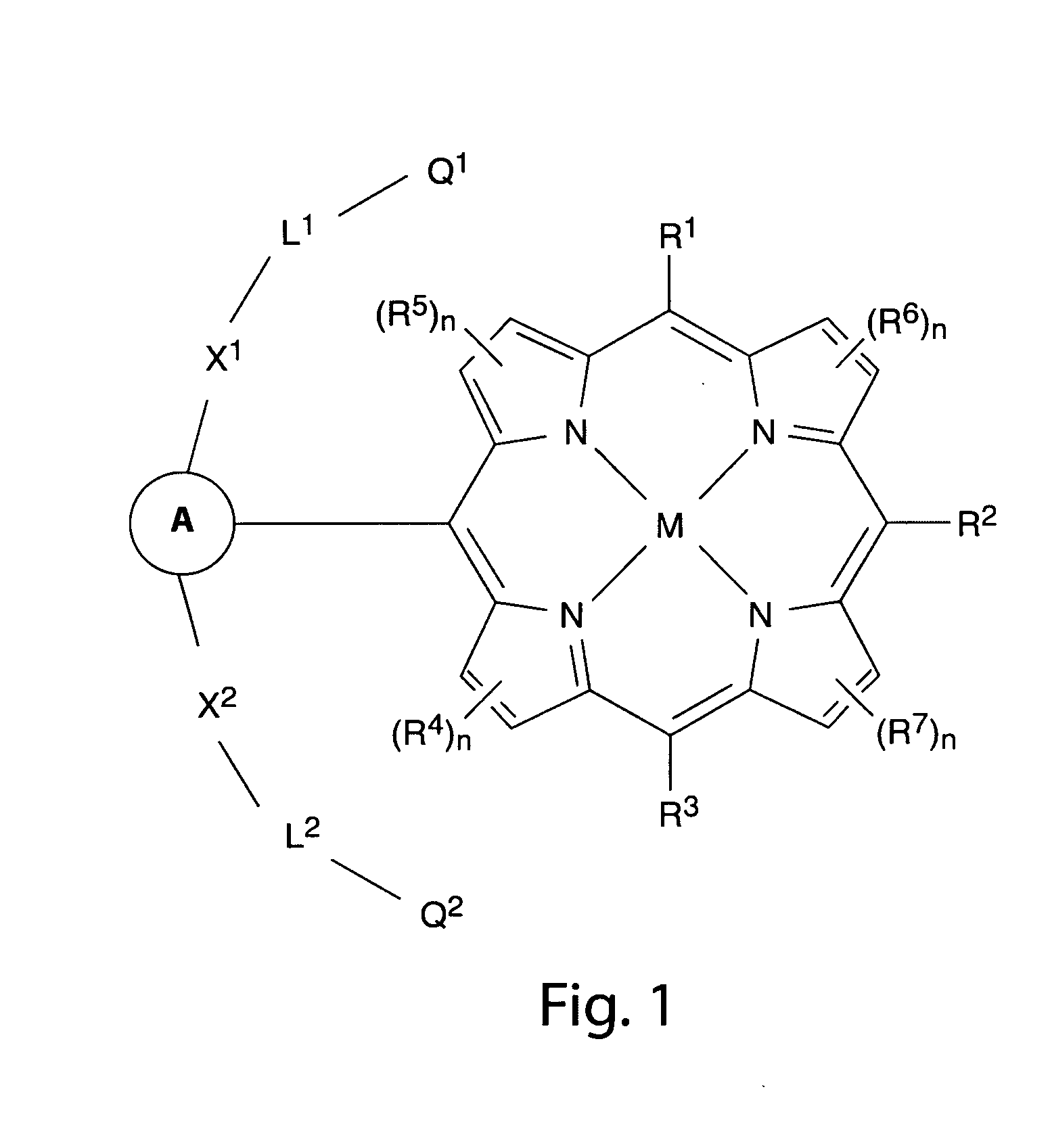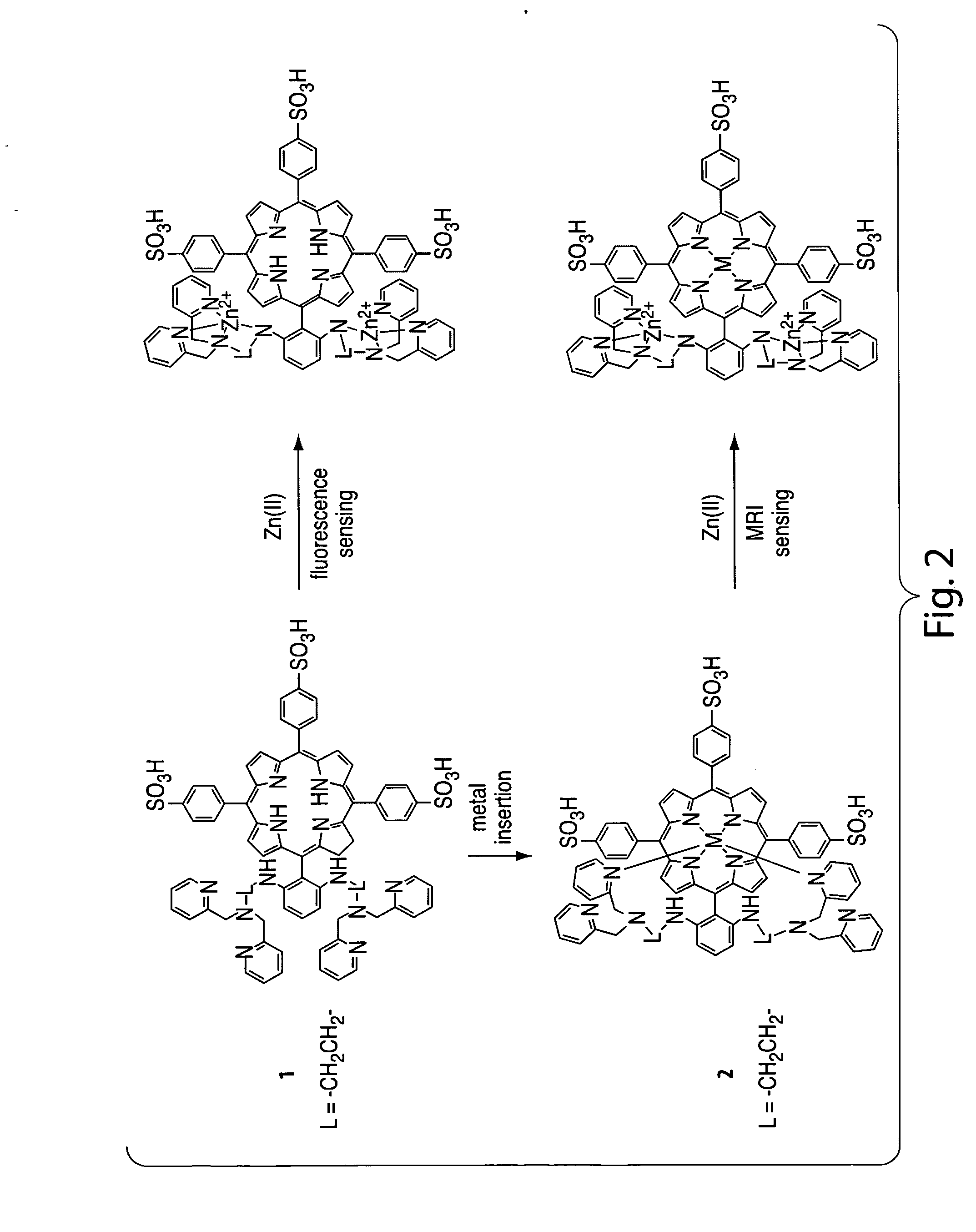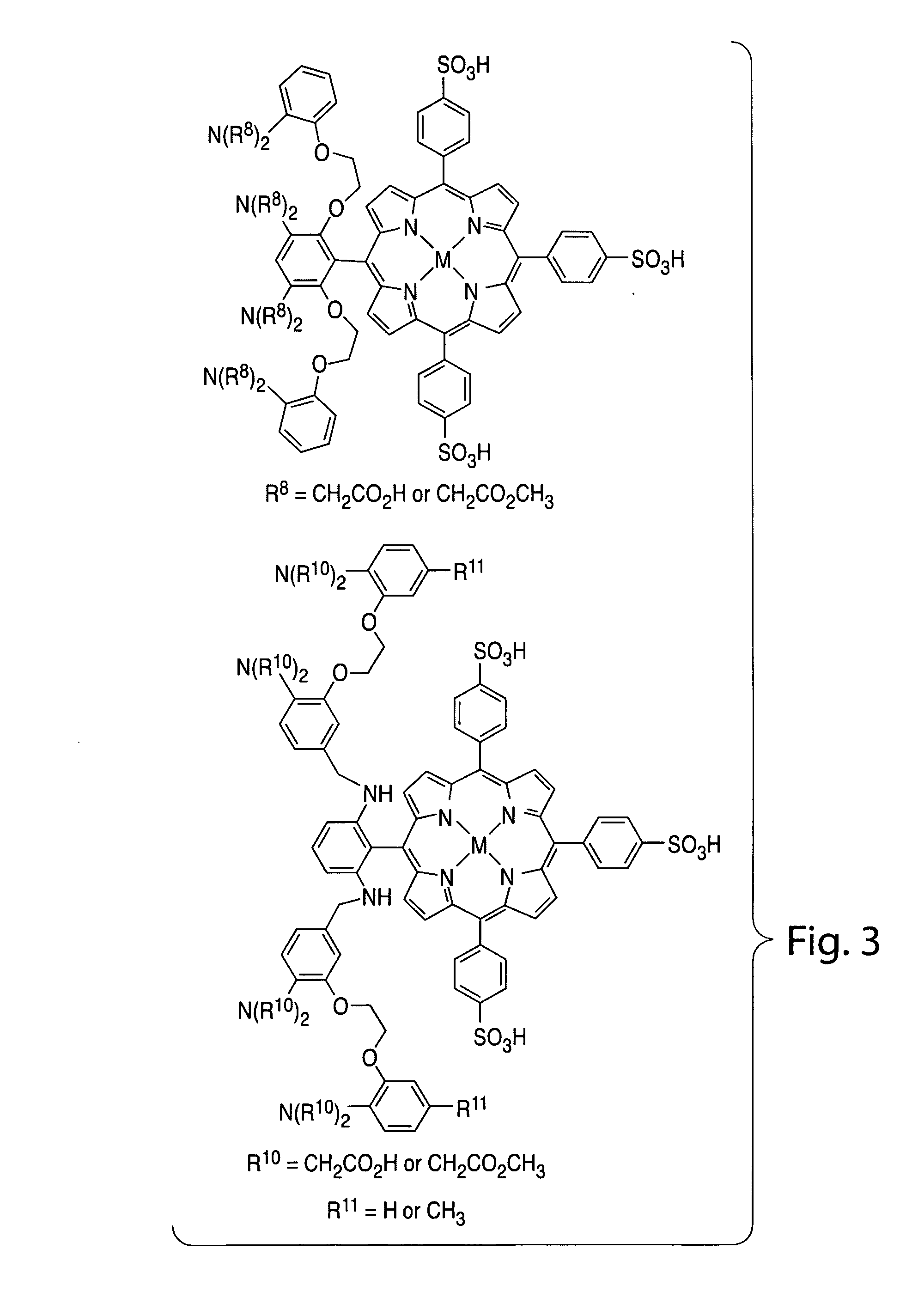Sensors for fluorescence and magnetic resonance imaging
- Summary
- Abstract
- Description
- Claims
- Application Information
AI Technical Summary
Benefits of technology
Problems solved by technology
Method used
Image
Examples
example 1
[0111]The following example describes the synthesis of 2,2′-(phenylmethylene)bis(1H-pyrrole) (compound 3). A solution containing 200 mL of H2O and 50 mL of pyrrole (0.72 mol) was prepared and bubbled with argon for 15 min. A 1 -mL portion of HCl (37% aq.) was added, followed by benzaldehyde (14.2 mL, 0.14 mol) in a dropwise manner over 15 min. The solution turned brown and was maintained under argon for an additional 2 h, after which it was carefully neutralized with NH4OH and then diluted with 100 mL of H2O and extracted with CH2Cl2 (3×150 mL). The combined organic phases were dried over Na2SO4 and allowed to evaporate to remove solvent and excess pyrrole. The resulting solid mixture was dissolved in 100 mL of toluene at 80° C. and slowly cooled to room temperature to yield a first crop of product (11.0 g white powder) by filtration. The mother liquor was further concentrated to yield two more batches of product with acceptable purity. A total of 17.1 g of pure material was isolate...
example 2
[0112]The following example describes the synthesis of 5-(2,6-N-dinitrophenyl)-10,15,20-trisphenylporphyrin (2NO2-TPP) (compound 4). (Phenylmethylene)bis(1H-pyrrole) (3, 3.112 g, 14.0 mmol), freshly distilled benzaldehyde (712 μL, 7.0 mmol), and 2,6-dinitrobenzaldehyde (1.575 g, 8.0 mmol) were dissolved in a liter of dry CH2Cl2 under argon. A 1-mL portion of BF3·Et2O was injected into the reaction solution, which was then stirred at room temperature for 2 h in the dark. 2,3-Dichloro-5,6-dicyano-1,4-benzoquinone (DDQ) (6.8 g, 30 mmol) was added and the reaction was allowed to proceed under argon in the dark overnight. The solvent was removed and the resulting solid residue was dissolved in CH2Cl2 / MeOH (3:1) and then mixed with aluminum oxide (˜80 g). The mixture was evaporated to dryness. Flash chromatography using an aluminum oxide column, followed by passage through a second, silica gel column afforded 569.0 mg of a purple solid. Yield: 11.5%. 1H NMR (CD2Cl2, 400 MHz) δ:2.73 (2H, s...
example 3
[0113]The following example describes the synthesis of 5-(2,6-diaminophenyl)-10,15,20-trisphenylporphyrin (2NH2-TPP) (compound 5). A mixture of 2NO2-TPP, (4, 98.4 mg) and SnCl2 (390.1 mg) was stirred in 5 mL of 1 N aqueous HCl under argon in the dark at room temperature for 12 h and cooled in an ice bath. The solution was then carefully titrated with NH4OH until the color of mixture changed from green to brown at pH 10. The mixture was diluted with 50 mL of water and extracted with CH2Cl2 (3×50 mL). The organic layer was washed with water and brine and then dried over Na2SO4. The solvent was removed and the residue was purified by silica gel column chromatography using a gradient eluent from CH2Cl2 / hexan (4:1) to CH2Cl2 / ethyl-acetate (6:1); 77.0 mg of product was obtained as a purple solid (85.5%). 1H NMR (CD2Cl2, 400 MHz) δ: 2.75 (2H, s), 3.39 (4H, s, br), 6.64 (2H, d, J=8.1 Hz), 7.43 (1H, t, J=8.1 Hz), 7.83 (9H, m), 8.27 (6H, dd, J1=7.5 Hz, J2=1.5 Hz) 8.90 (4H, s), 8.92 (2H, d, J=...
PUM
| Property | Measurement | Unit |
|---|---|---|
| Wavelength | aaaaa | aaaaa |
| Optical properties | aaaaa | aaaaa |
| Paramagnetism | aaaaa | aaaaa |
Abstract
Description
Claims
Application Information
 Login to View More
Login to View More - R&D
- Intellectual Property
- Life Sciences
- Materials
- Tech Scout
- Unparalleled Data Quality
- Higher Quality Content
- 60% Fewer Hallucinations
Browse by: Latest US Patents, China's latest patents, Technical Efficacy Thesaurus, Application Domain, Technology Topic, Popular Technical Reports.
© 2025 PatSnap. All rights reserved.Legal|Privacy policy|Modern Slavery Act Transparency Statement|Sitemap|About US| Contact US: help@patsnap.com



